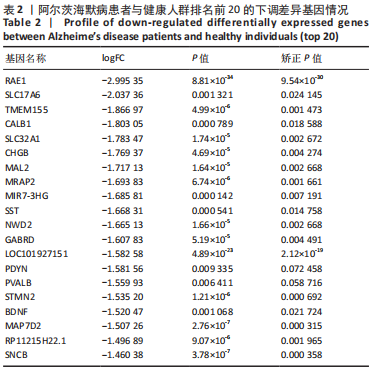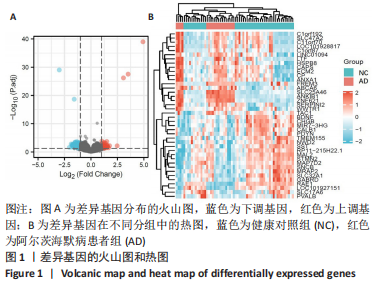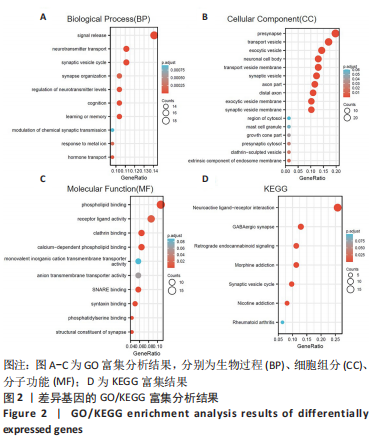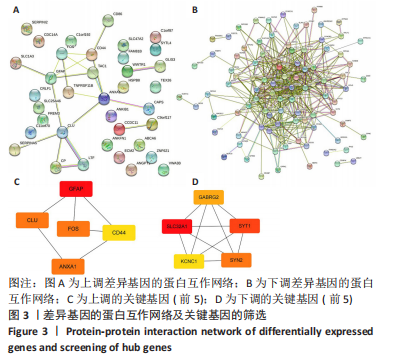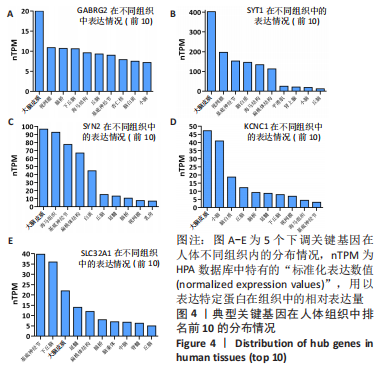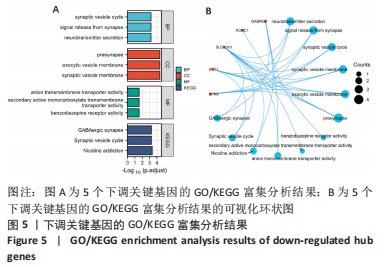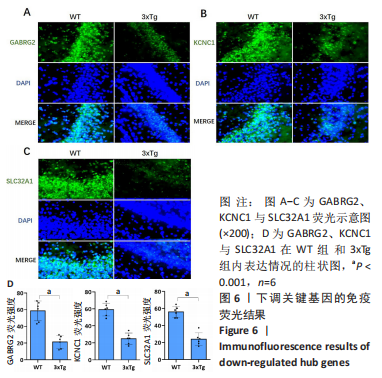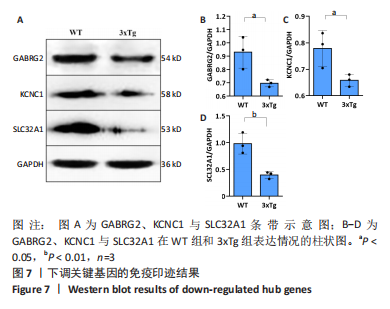中国组织工程研究 ›› 2023, Vol. 27 ›› Issue (35): 5653-5658.doi: 10.12307/2023.855
• 组织工程相关大数据分析 Big data analysis in tissue engineering • 上一篇 下一篇
阿尔茨海默病发病机制相关基因生物信息学分析及实验验证
李欣儒1,2,柴世凡1,2,李蔚然1,2,蔡红艳3,叶育采1,2,李 硕4,侯 萌4,王昭君1,2
- 1山西医科大学,山西省太原市 030000;2山西医科大学生理学系;细胞生理学教育部重点实验室;山西省细胞生理学重点实验室,山西省太原市 030000;3 山西医科大学基础医学院微生物与免疫教研室,山西省太原市 030000;4山西医科大学附属第二医院,山西省太原市 030001
Bioinformatics analysis and experimental validation of genes related to the pathogenesis of Alzheimer's disease
Li Xinru1, 2, Chai Shifan1, 2, Li Weiran1, 2, Cai Hongyan3, Ye Yucai1, 2, Li Shuo4, Hou Meng4, Wang Zhaojun1, 2
- 1Shanxi Medical University, Taiyuan 030000, Shanxi Province, China; 2Department of Physiology, Shanxi Medical University; Key Laboratory of Cellular Physiology, Ministry of Education; Key Laboratory of Cellular Physiology in Shanxi Province, Taiyuan 030000, Shanxi Province, China; 3Department of Microbiology and Immunology, School of Basic Medical Sciences, Shanxi Medical University, Taiyuan 030000, Shanxi Province, China; 4Second Hospital of Shanxi Medical University, Taiyuan 030001, Shanxi Province, China
摘要:

文题释义:
阿尔茨海默病:是一种起病隐匿的神经退行性疾病。临床上表现为进行性记忆功能丧失、失语、认知行为能力损害乃至丧失生活自理能力。GEO数据库:是一个蕴含高通量测序数据的免费公共数据库。科学研究可以与之相结合,判断疾病的潜在变异基因或药物的潜在作用靶点。
背景:阿尔茨海默病的机制挖掘十分重要,通过生物信息学对阿尔茨海默病潜在治疗靶点的研究,可以为阿尔茨海默病治疗提供良好的指示作用。
目的:使用生物信息学分析方法筛选与阿尔茨海默病发病机制相关的基因并在动物水平加以实验验证。
方法:利用GEO在线数据库筛选差异基因;利用DAVID在线数据库进行GO/KEGG富集分析;使用STRING数据库进行蛋白互作网络的构建;使用HPA数据库判断目的蛋白在人体中的分布情况;最后使用免疫荧光技术和免疫印迹技术验证分析蛋白表达情况。
结果与结论:①利用GEO在线数据库内数据集GSE48350获取阿尔茨海默病与健康人群的基因芯片,使用GEO2R在线分析平台分析两个人群的差异基因,其中上调基因42个,下调基因131个;②GO基因功能注释分析结果显示差异基因主要位于突触前、运输囊泡和胞外囊泡;介导神经递质释放和突触小泡功能等生物进程;参与磷脂结合、受体-配体活性和网格蛋白结合等分子功能的构成;③KEGG通路分析结果显示差异基因主要富集于神经活性配体-受体相互作用、γ-氨基丁酸神经突触与逆行内源性大麻素信号等突触功能相关信号通路;④结合蛋白互作网络筛选出5个上调关键基因:CLU、GFAP、CD44、FOS、ANXA1;5个下调关键基因:GABRG2、SYT1、SYN2、KCNC1、SLC32A1;⑤实验证实在阿尔茨海默病小鼠模型的海马组织中GABRG2、KCNC1、SLC32A1表达显著下调;⑥结果提示上述3个基因可以作为治疗和诊断阿尔茨海默病的潜在基因,为阿尔茨海默病的治疗提供重要的线索,亦可以作为阿尔茨海默病与癫痫的共治疗靶点。
https://orcid.org/0000-0002-3948-882X(李欣儒)
中国组织工程研究杂志出版内容重点:组织构建;骨细胞;软骨细胞;细胞培养;成纤维细胞;血管内皮细胞;骨质疏松;组织工程
中图分类号:

